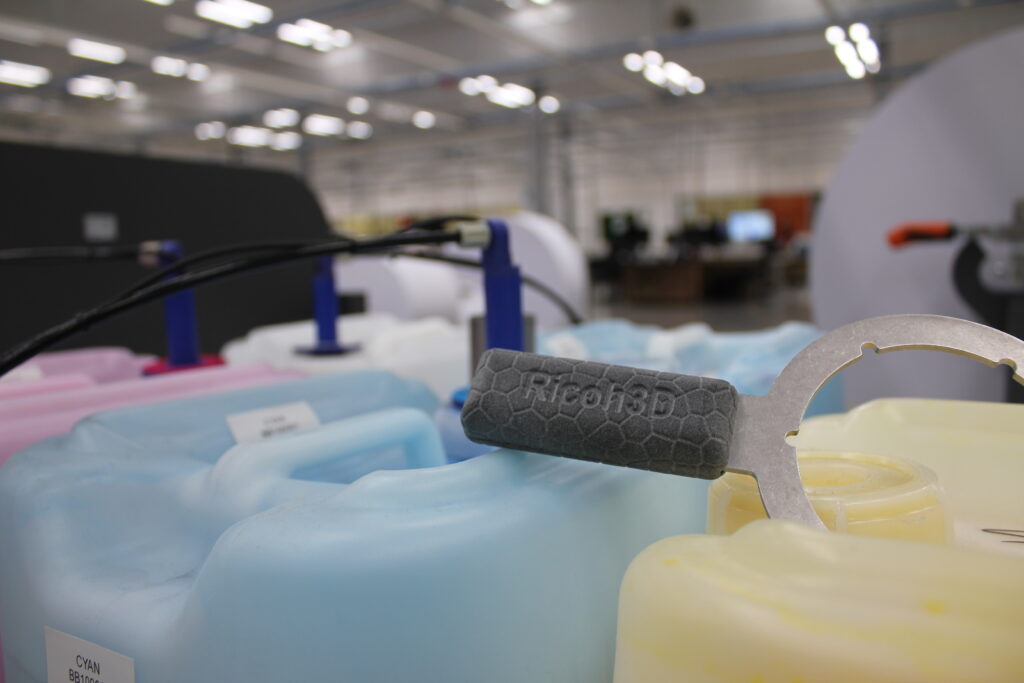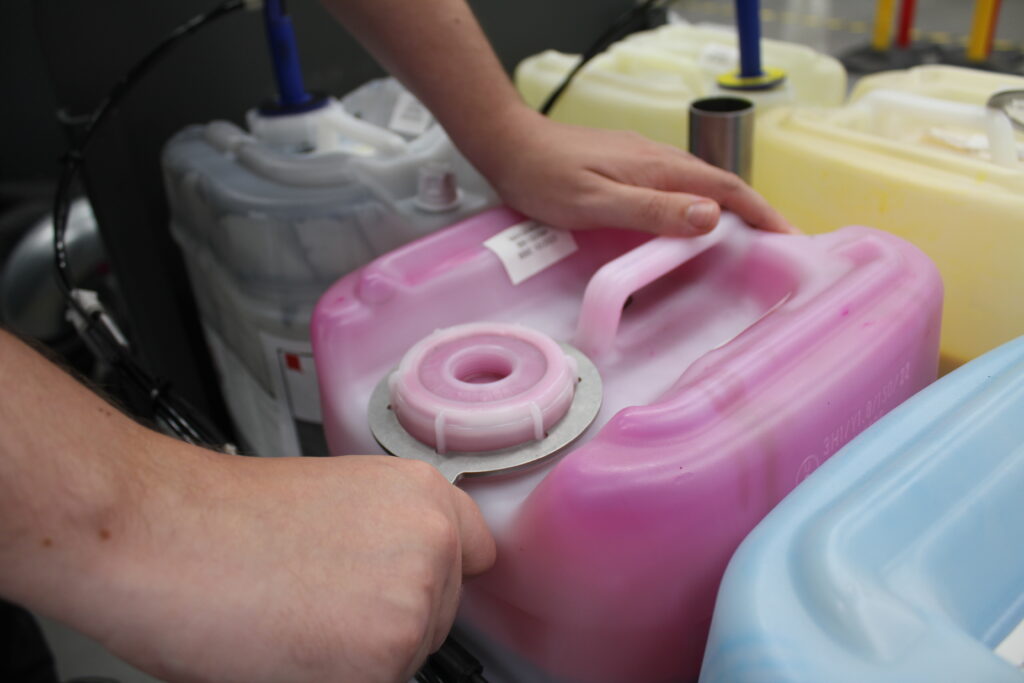Background
The ink for the Ricoh V/VC20000 range of printers comes in 19 litre containers. These containers have a screw on lid that has to be removed, to then insert the ink lance that draws ink from the container to the print heads.
Challenge
The problem was that these lids have a tamper seal on them, which makes them very difficult to open. Quite a lot of force is required to open the lid, often using two hands. As well as the possibility of strain injuries, opening the bottles is also painful on the hands, so a rag was being used to offer some protection. Neither of these issues were good from a health and safety point of view.
The Ricoh’s Customer Experience Centre (CEC) team engaged with the Ricoh UK Products Ltd (RPL) tooling department to design and manufacture a tool to aid in the removal of the ink bottle lids. This tool fit the lid perfectly and reduced and removed the health a safety issues of before.
Although the issue had technically been solved, an improvement was sought. RPL shared the tool with the original equipment manufacturer of the machine/ink and explained the reasoning behind it.
Following on from this explanation, the Original Equipment Manufacturer (OEM) had a tool manufactured themselves. However, it was felt that this tool could be improved upon even further. Although functional, the thin metal handle brought about the issues of before with it being painful on the hands.

Solution
Once again, the CEC examined how the tool could be improved, with the logical choice being to fit a thicker handle to the tool.
For this, the CEC engaged with Ricoh 3D to design and produce a handle. A handle was manufactured, that came in two parts and could be bolted together to form a full handle.
Simon Plevin, Production Print Engineer at RPL, who commissioned the handle, explained.
He said: “I engaged with Charlie Kelsey (Ricoh 3D engineer) to design and manufacture a two-part handle for the bottle opening tool.
“This was achieved by passing the tool to Charlie. He then quickly sent images for his design, which looked good and were then used to manufacture the final product.
“The handles are very good and were available with very little lead time.”

Benefit
The new handle is now much more ergonomic and comfortable than the OEM tool, and by going in house to design the handle (using Ricoh 3D) lead times and costs are reduced.
Multiple handles have now been produced for the tools, which can be quickly and easily produced should the need arise.
Testimonial
Rich Minifie, Senior Engineer for Ricoh 3D, said: “Engineers thought of 3D printing because of the short lead time.
“Through 3D printing we’re able to make organic ergonomic shapes.
“This is a perfect application where 3D printing compliments traditional manufacturing.”
